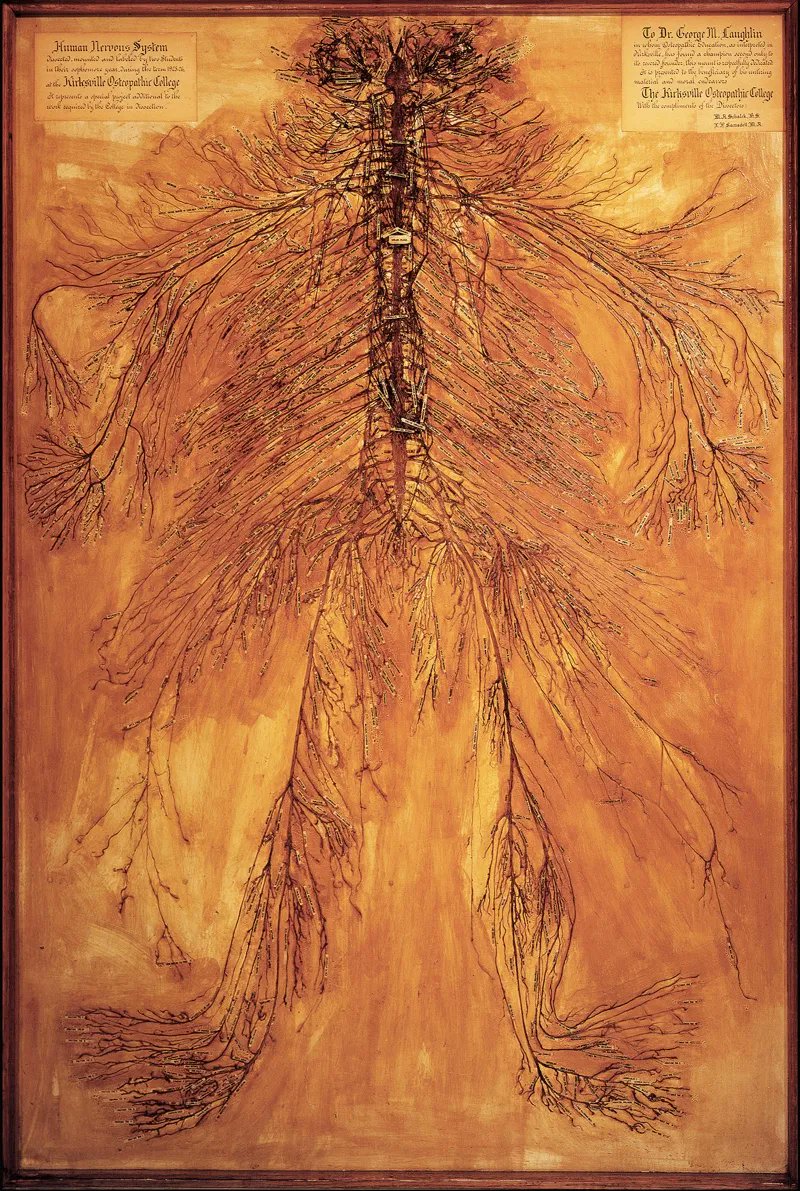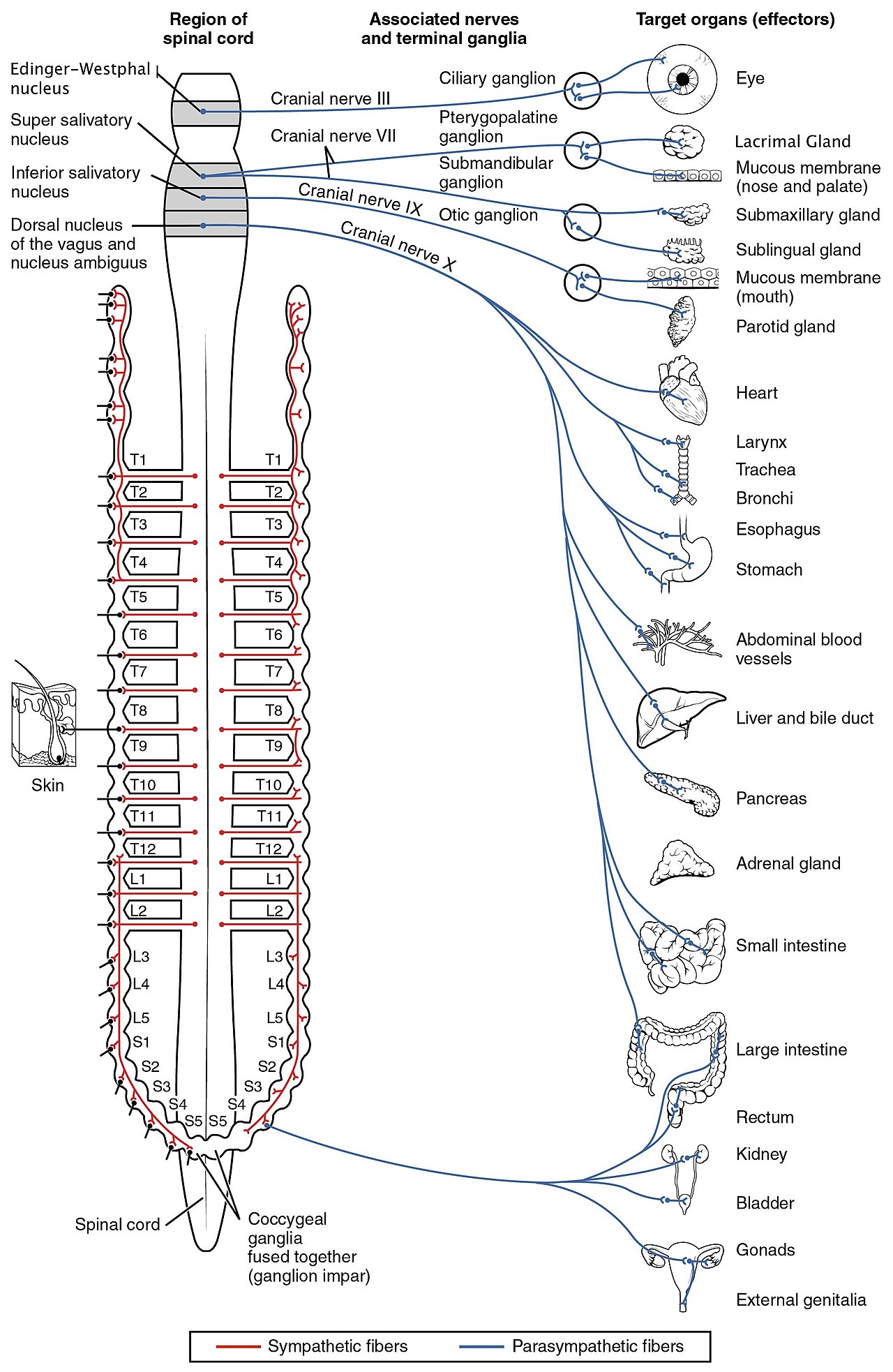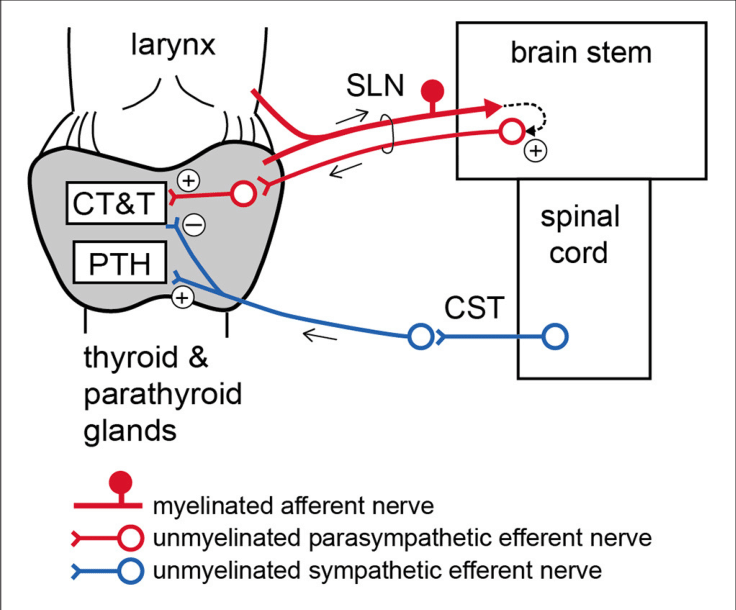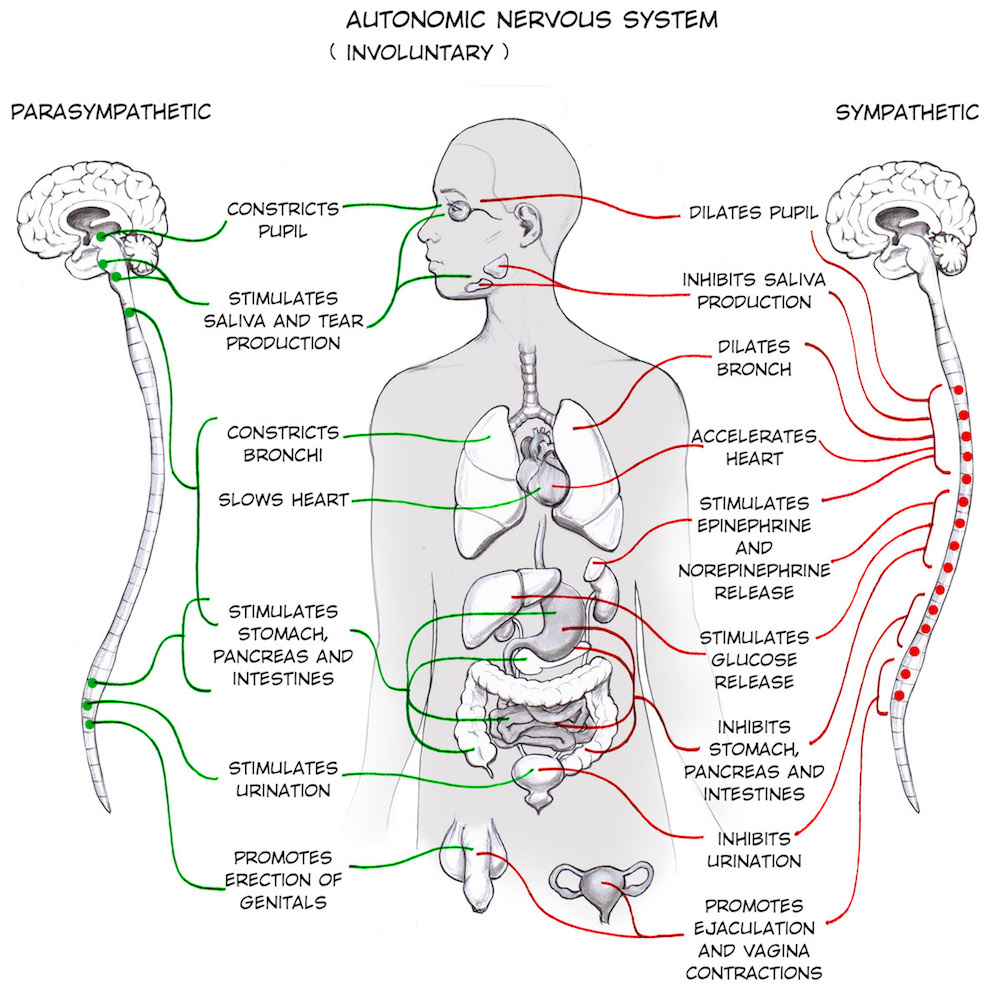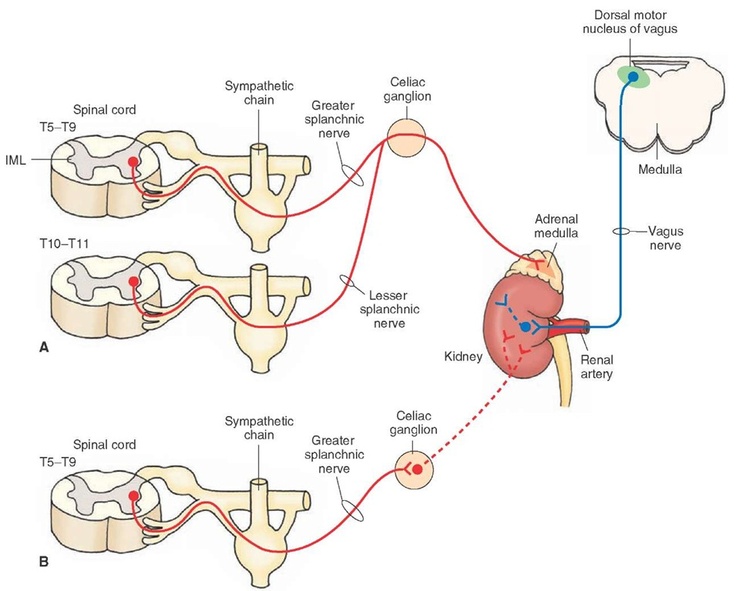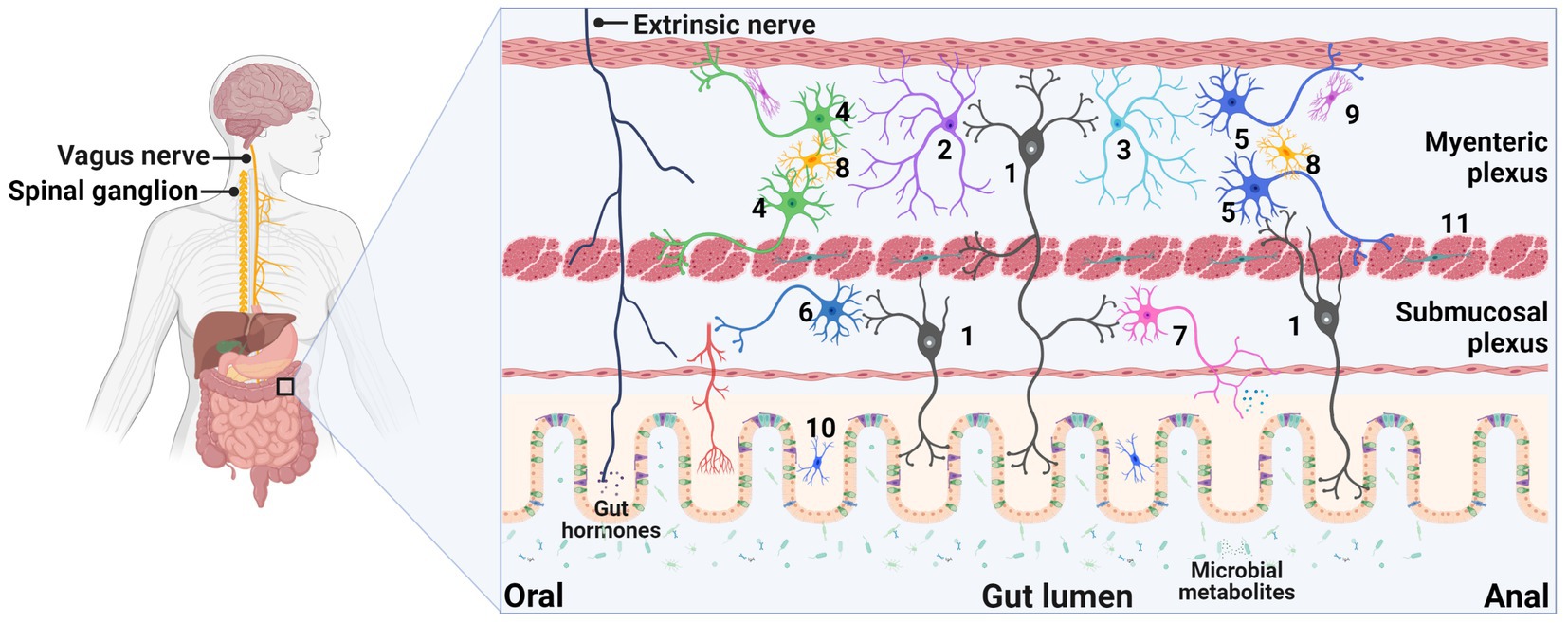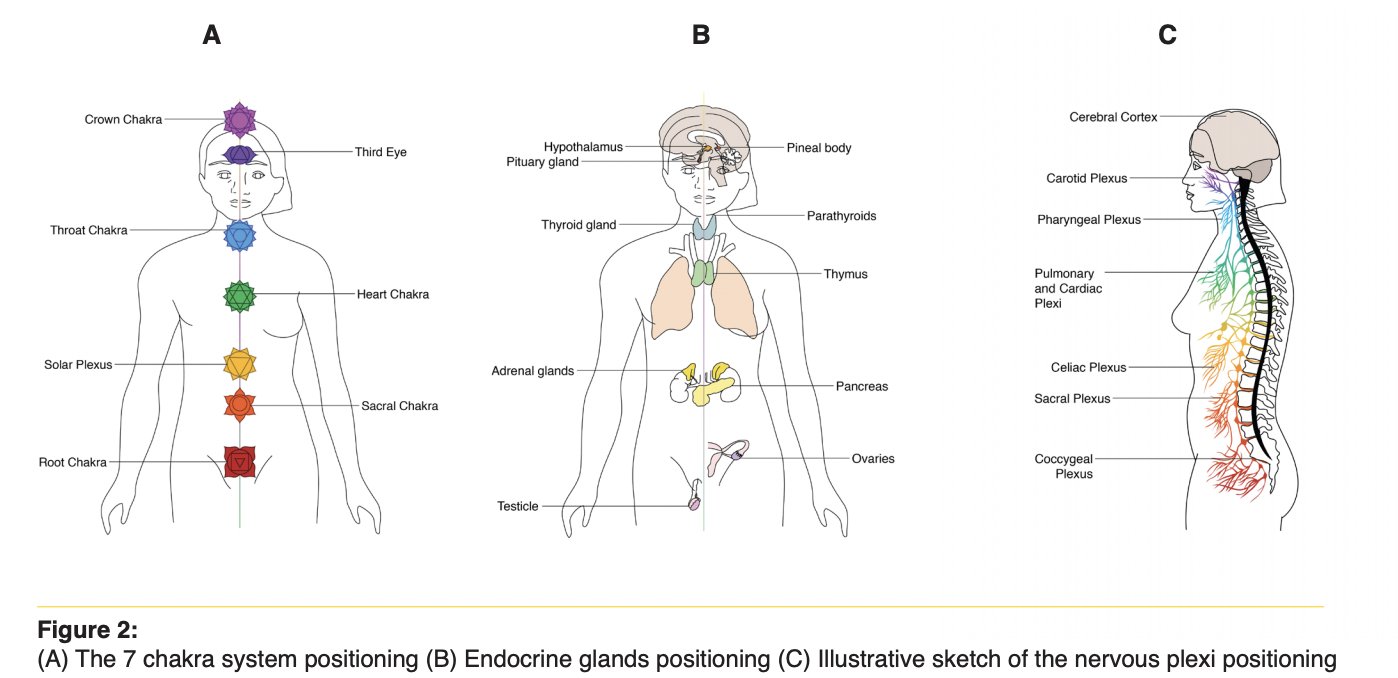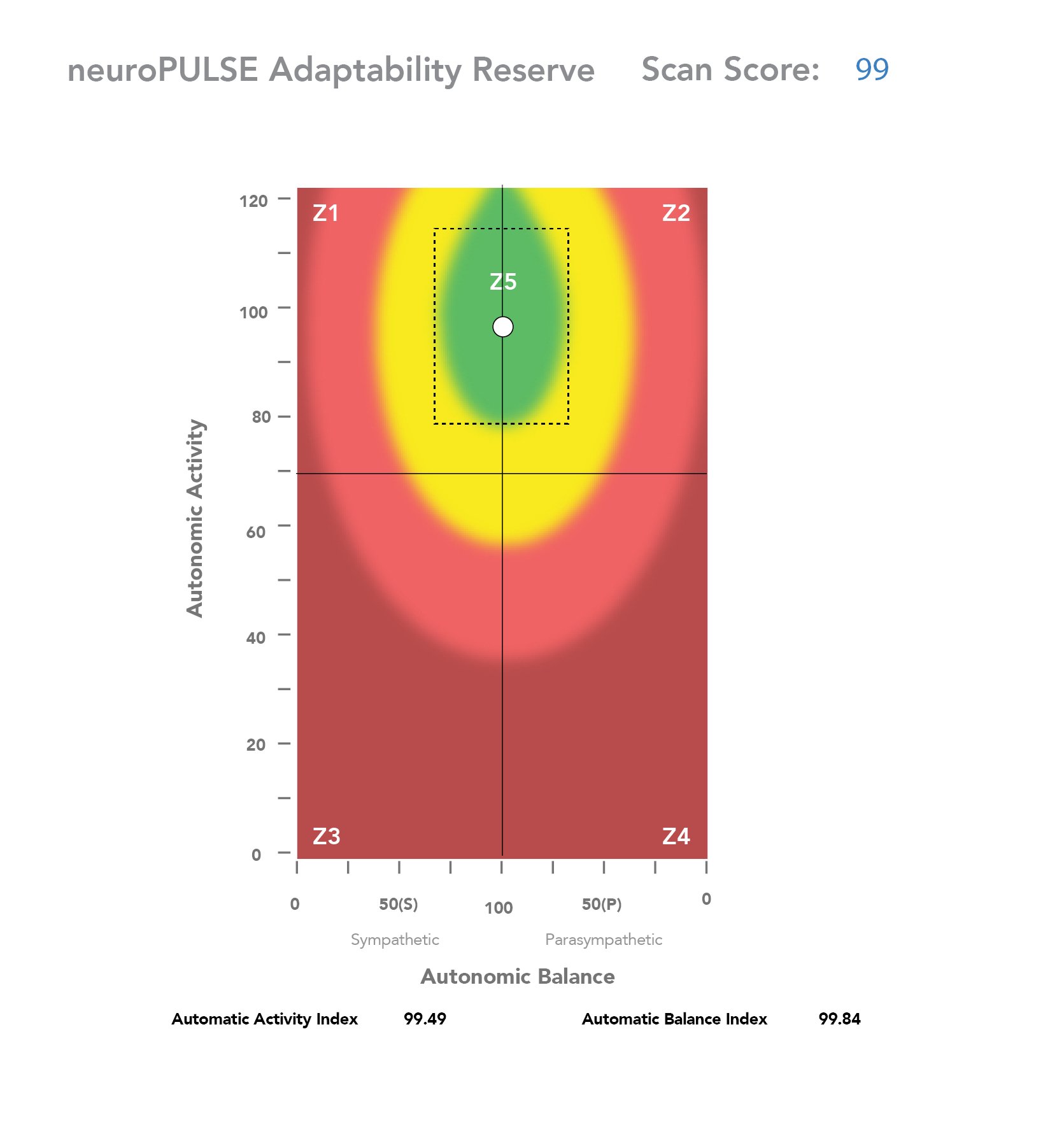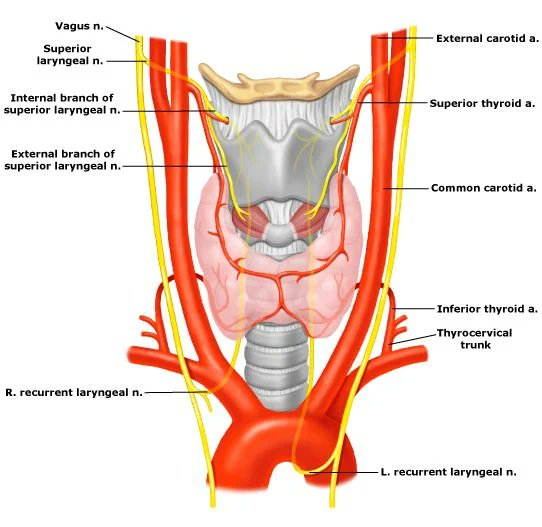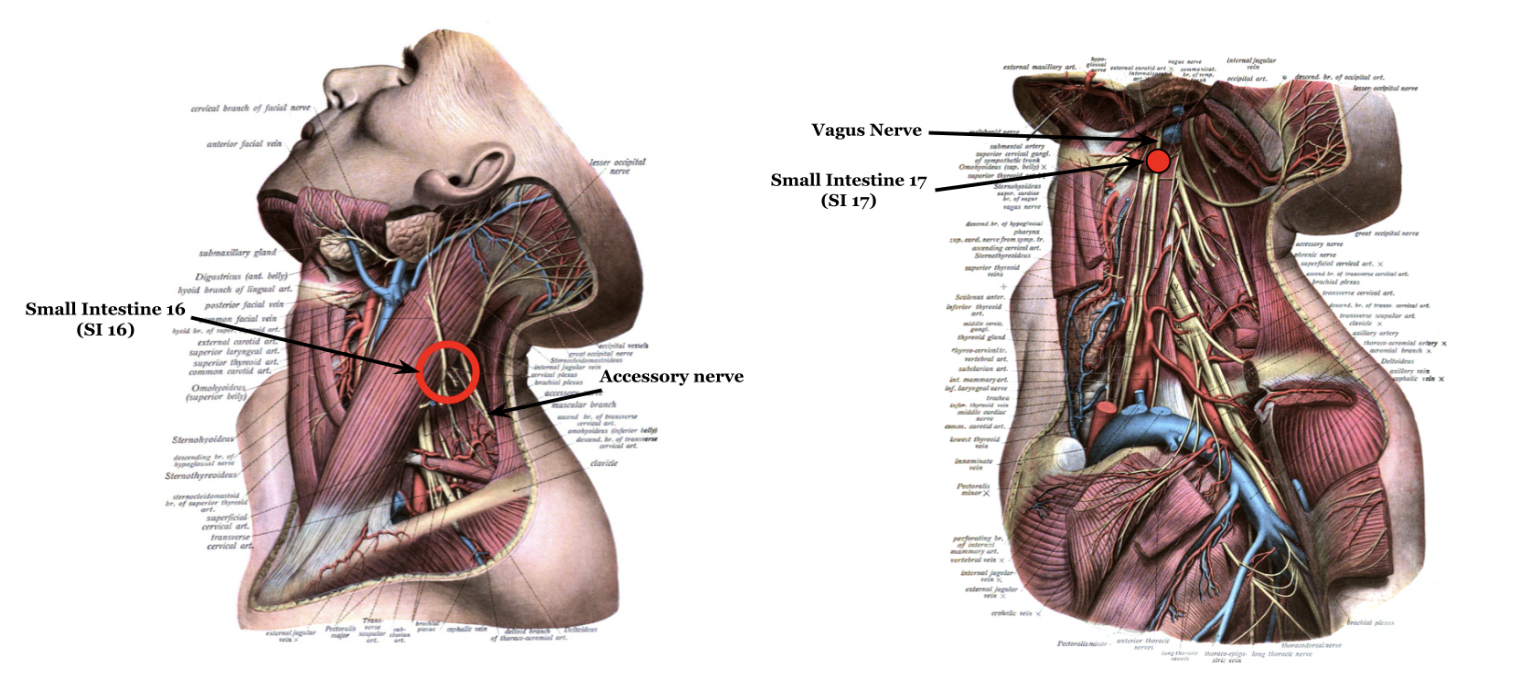The unconscious puppet master
The autonomic nervous system (ANS) runs in the background of your life, helping to manage aspects of existence that keep you alive from one moment to the next. Your physical form, gut, hormones, and mental state are largely the result of this unconscious information relay system.
Rest, digest, reproduce vs fight, flight, freeze
The ANS has two modes of operation: parasympathetic and sympathetic. The parasympathetic (rest, digest, reproduce) promotes functions that sustain life over long periods, and the sympathetic (fight, flight, freeze) protects life for short periods. Life is dance of the two.
Parasympathetic priority
The parasympathetic is our natural state of being, one of rest, growth, and expansion. Here energy is produced effectively (via thyroid metabolism), food is digested, and repair/growth can occur. The majority of these nerves lie in the cranium and the sacrum.
Sympathetic systems
Under the threat of harm, the sympathetic nervous system helps redirect energy toward immediate survival via the secretion of "stress" hormones. Long-term processes including thyroid metabolism/digestion are paused. Sympathetic nerves are located primarily in the torso and limbs.
The enteric division
The concentration of nerves in the gut (more than in the spinal cord) makes up the enteric nervous system (ENS). This serves as a sensory mechanism for the ANS, communicating the status of the gut via the vagus nerve. Irritation can pique a sympathetic response.
Connection to the fascia
The fascia and skin are another sensory interface for the autonomic nervous system. The fascia’s ability to transmit mechanical information by the body is interpreted by the ANS and relayed to the brain. Healthy fascia is important for autonomic function.
Craniosacral rhythm
The craniosacral pump primarily nourishes the parasympathetic nerves of the… cranium and sacrum. If inadequate, these nerves can be starved of nutrition and neurotransmitters, potentially leading to dysfunction of the parasympathetic nervous system.
The ANS and chakras
The binary nature of the ANS is not necessarily absolute as different parts of the body can exist in different states at once. Harmony within the system is important for ensuring total coherence. This is related to the idea of chakras and their potential "blockage".
Dynamic balance
Ideally, once the threat has disappeared, a parasympathetic state can be reassumed. There will always be a balance between the two, however, the parasympathetic should be dominant. Abuse of sympathetic mechanisms will eventually lead to chaos and degeneration throughout the body.
Sympathetic Triggers
The sympathetic is an energy loan system, continuing to borrow without repaying can result in:
-Insufficient digestion
-Underactive thyroid
-Inactive craniosacral pump
-A shift from sex steroids (prog., DHT) to stress steroids (cortisol, estrogen)
-Fibrosis of fascial tissue
What can cause sympathetic stimulation?
-Insufficient nutrition (glucose, sodium, magnesium, calcium, thiamine)
-Life-threatening situations (perceived)
-Hyperventilation
-Gut irritation
-Psychological trauma/stress
-Physical injuries to nerves/fascia
-A broken craniosacral pump
Parasympathetic power
When running in predominantly parasympathetic mode the following can occur:
-Thyroid metabolism (via vagal innervation)
-All aspects of digestion
-Craniosacral rhythm (health of the brain/spinal cord)
-Breathing
-Sleep
-Relaxation, play, love
What enables parasympathetic function?
-The absence of perceived stress
-Sufficient nutrition/energy; especially glucose, sodium, magnesium, calcium, potassium, and thiamine
-Slow respiration (long exhales)
-A clean and happy gut
-A working craniosacral pump
Other means to help assume a parasympathetic state:
-Lateral eye/tongue movement
-Humming/singing
-Gargling
-Light, especially IR/red
-Massage/acupuncture (see acu. points)
-Neural entrainment/Hemi Sync
-Electrostimulation of the vagus nerve
